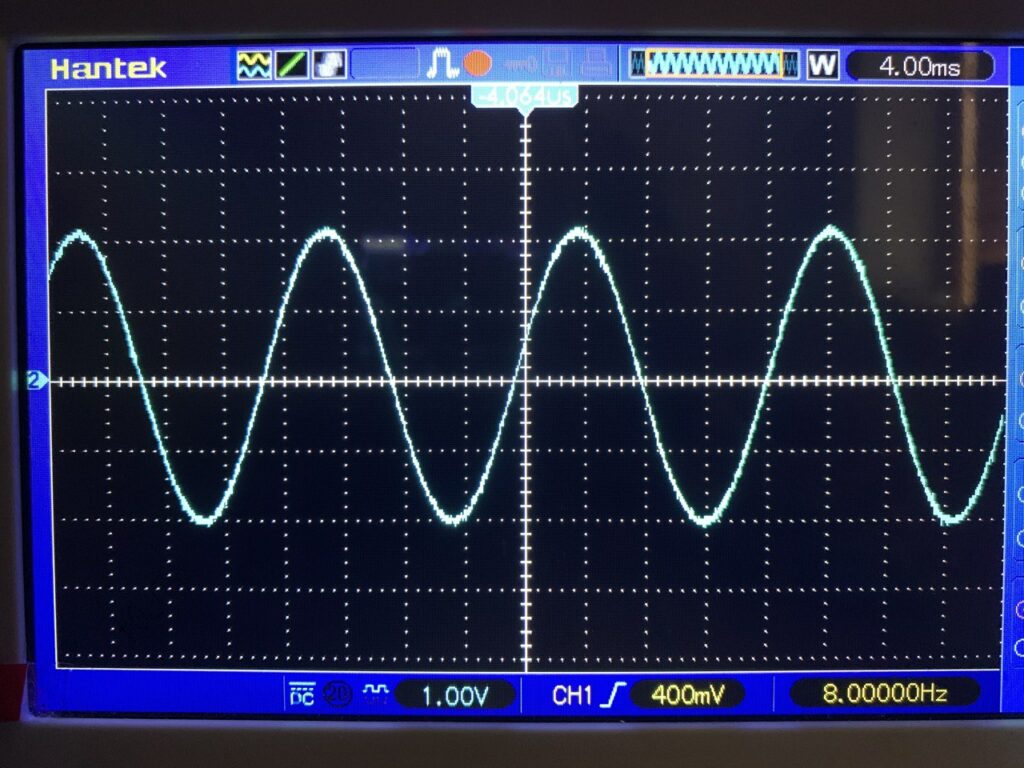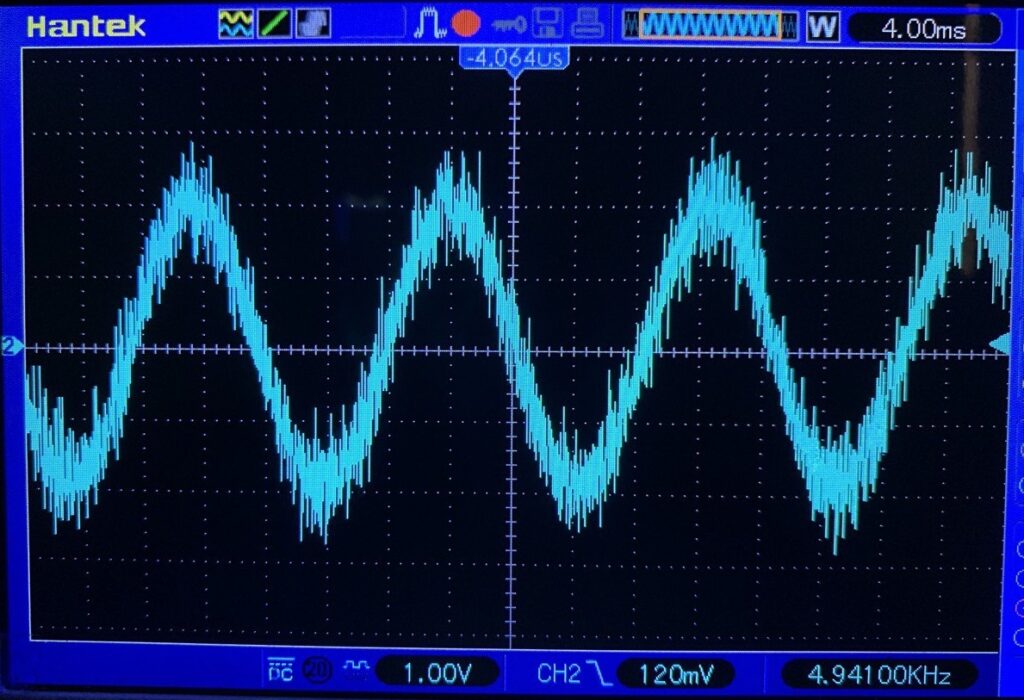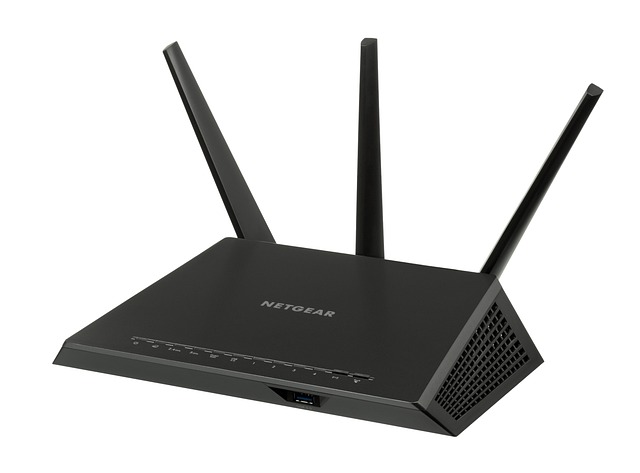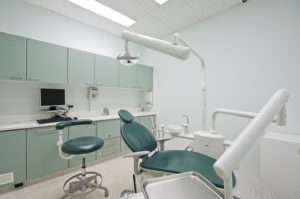Dirty Electricity: Could “Noisy” Power Lines Have Negative Health Effects?

The electric power grid uses a 50 or 60 Hertz frequency to supply electricity. In other words, the electricity from a standard electrical wall plug changes polarity from positive to negative 50 to 60 times per second. These transitions are smooth and occur as a 50 or 60 Hertz sine wave as shown in “image 1” on the right.
However, numerous types of equipment and electrical loads can add additional frequencies to the standard power grid. This additional “noise” is what qualifies electricity as “dirty.” For example, if you are listening to your stereo and someone turns on a vacuum cleaner and you hear a loud pop, that pop is an example of electrical noise on the power line. “Image 2” is an example of what a dirty power line might look like.

A couple of researchers have previously explored whether exposure to so-called “dirty” electromagnetic fields from noisy power lines can cause health problems. While the research is of fairly poor quality and in need of replication, it shouldn’t necessarily be dismissed out of hand.
Dirty Electricity: Causes
A recent analysis looked at common household electrical equipment as sources of dirty electricity. While the study was small and not comprehensive, compact fluorescent light bulbs and microwave ovens were found to produce the most amount of noise on the power line (Seker 2024).
Other sources of dirty electricity in the home include certain brands of LED light bulbs and dimmer switches (Yanuar 2016, Panchal 2024). For LED bulbs, the noise depends on the design of the bulb and can vary from product to product. Computers are also commonly a problem due to their power supply. Nearby businesses that use industrial equipment, including motors and generators, can also add noise to local power lines which can contribute to dirty electricity in the home.
Potential Health Effects
Identifying the health effects from exposure to dirty electromagnetic fields is complicated. When it comes to dirty electricity exposure, numerous variables can change exposure levels. The distance to wires and devices emitting the noise can obviously vary based on a person’s routine. The effects from other households or local businesses on the same electrical grid may also influence the amount of noise from day to day. In addition, exposure levels may need to be sustained for longer periods of time to document negative effects. Even the type and source of electrical noise could change the impact on a person’s health.
Studies and Case Reports
A school in Toronto had a student who was reportedly sensitive to electromagnetic fields (Havas 2004). In an attempt to help the child, plug-in filters were installed to decrease noise on the power lines throughout the school. With the filters installed, electrical noise was reduced by 50%. Teachers, who were unaware of the nature of the testing, were asked to complete a daily questionnaire on personal health and student performance for six weeks: three weeks with the noise filters and three weeks without. Overall, 55% of the teachers noted health improvements with the system in place while 34% noted no change and 11% had worsening symptoms. Students appeared to benefit from the reduction in dirty electricity as well, with stronger benefits for grade school and middle school age groups.
Case reports of individuals having blood sugar problems and worsening symptoms of multiple sclerosis that coincide with exposure to dirty electricity have also been reported (Havas 2006).
A non-blinded study in a public library in Olympia, Washington found interesting benefits with reduced exposure to dirty electricity. The library was initially identified as having exceedingly high levels of electrical noise on the local power lines (Milham 2013). After the discovery, the staff were informed and filters were installed to decrease the noise. Urine testing of neurotransmitter levels was conducted before and after the installation of filters for every two weeks for 18 weeks. At baseline, only one of seven volunteers had normal urinary neurotransmitter levels. Yet over the course of 18 weeks, neurotransmitter levels were restored to high normal on average.
Conclusion
While the research is interesting, better studies need to be conducted to fully confirm the deleterious effects of dirty electricity on human physiology. None of the trials to date have been double blind and placebo controlled. Blood sugar, inflammation, neurotransmitters and gene expression could all be analyzed to provide objective data on the negative effects in future research. Studies should also assess for outliers, individuals who are more sensitive than the general population.

Other sources of electromagnetic fields beyond those coming just from power lines should also be taken into account. Cell phones, cell towers, wireless internet and other sources of electromagnetic fields could also have health effects beyond those from noisy power lines as I’ve discussed previously.
While it is well known that exposure to electromagnetic fields have effects on the body, most claims of negative health effects are dismissed out of hand. Yet research clearly appears to indicate that concerns for negative health effects in a subset of the population are valid (Belpomme 2022). Considering how much exposure is increasing, better quality research is needed to understand the health implications of exposure to electromagnetic fields and dirty electricity.
What Can We Do?
Fortunately, if dirty electricity is a problem, it isn’t difficult to fix. While there are expensive plug-in units, they often consist of a capacitor, a type of filter that can be installed on the power line to dampen noise. General electromagnetic interference (EMI) and radio frequency interference (RFI) power line filters or line conditioners are available that often cost less than the more expensive units and should work for most situations.
In addition, there are units that can measure power-line noise before and after the installation of filters to verify that noise has been reduced. While I’m not advocating that everyone needs to decrease power-line noise, I’m open to the possibility that some people might benefit.



